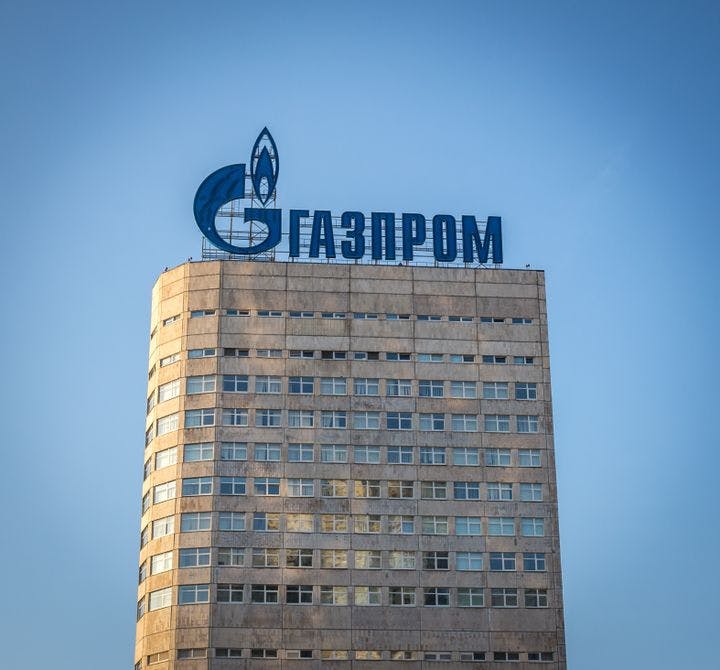Spring 2008
An Energy Cold War?
– The Wilson Quarterly
A number of observers are looking askance at the aggressive maneuvers of corporate Russia, fueled by oil and gas revenues, steered by a semi-authoritarian government with global ambitions, and equipped with a foreign-policy instrument called Gazprom.
Americans are too accustomed to sparring with the Russian bear to allow it to fade quietly into the ranks of demographically challenged second-tier nations. Now the former Evil Empire roams the earth again as “corporate Russia,” fueled by oil and gas revenues, steered by a semi-authoritarian government with global ambitions, and equipped with a foreign-policy instrument called Gazprom.
It’s easy to see how such a threatening new poster child of energy aggression emerged, writes Andreas Goldthau, a RAND Corporation fellow, in Policy Review (Feb.–March 2008). Russia owns 27 percent of the world’s gas reserves (with energy giant Gazprom controlling most of that), and accounts for 22 percent of global gas production. It is home to 6.2 percent of international oil reserves and produces 12 percent of all crude oil. High prices for energy have enabled an inefficient industrial nation to achieve a $1 trillion economy that is growing by almost seven percent a year.
Russia has soaked its dependent foreign customers during frigid winters, sidled up to China in conflicts with the West, and used the government-dominated Gazprom to curtail gas flow to Ukraine and Georgia when democratic movements threatened the pro-Russia old guard in those countries. But all the aggressive posturing is nothing more than a “well-crafted piece of Russian PR,” Goldthau asserts. Russian leader Vladimir Putin has “limited ability” to use oil as a weapon because the Russian economy is as dependent on oil revenue as its customers are on its oil.
Moreover, Russia’s accessible energy supplies are gradually running out and Gazprom has been slow to develop reserves, in part because of the vast amount of capital this would require. Since the collapse of the Soviet Union, the company has coasted along on “legacy” gas from fields opened up and transmission lines built in the last two decades of the Soviet era, notes geographer Matthew J. Sagers in Eurasian Geography and Economics (Nov. 2007). But in recent years Gazprom’s output has been essentially flat even as demand increased, and its most promising reserves are on the Yamal Peninsula, a landmass above the Arctic Circle where conditions defy imagination. Winds can rise to a steady 90 miles an hour there, wind-driven water up to 33 feet deep covers low-lying coastal land several months of the year, and solid ground gives way to friable sand that offers little support for drill pads, pipelines, and other infrastructure. The estimated cost of opening up the area is $31 billion, if all goes perfectly according to plan.
Gazprom’s challenges are hardly limited to the technical realm, write B. Kuz’man, its chief personnel manager, and two colleagues in Problems of Economic Transition (Sept. 2007). In recent years, the company has been forced to sell natural gas at “dumping prices” inside Russia. Even so, nonpayment has been a big problem; the Russian Ministry of Defense is one of the “persistent” deadbeats. Gazprom’s interests are subordinated to socioeconomic and state problems, Kuz’man says. Until 2004 it was responsible for recreation centers, hospitals, airports, railroads, hotels, and farms that occupied almost as many of its workers (31 percent) as the transportation of gas (33 percent).
Nonetheless, rising energy prices have boosted the Russian state budget and fueled Russian aggression, according to Charlie Szrom and Thomas Brugato of the American Enterprise Institute in The American (Feb. 22, 2008). Citing an “aggression index” they compiled, the authors found that the higher the price of oil over the past seven years, the more likely Russia has been to sell arms to terror-sponsoring states, conduct threatening military exercises, and interrupt energy supplies to neighbors.
For Russia, Szrom and Brugato conclude, today’s high-priced oil and gas have supplied “liquid courage.”
* * *
Photo courtesy of Flickr/Thawt Hawthje
